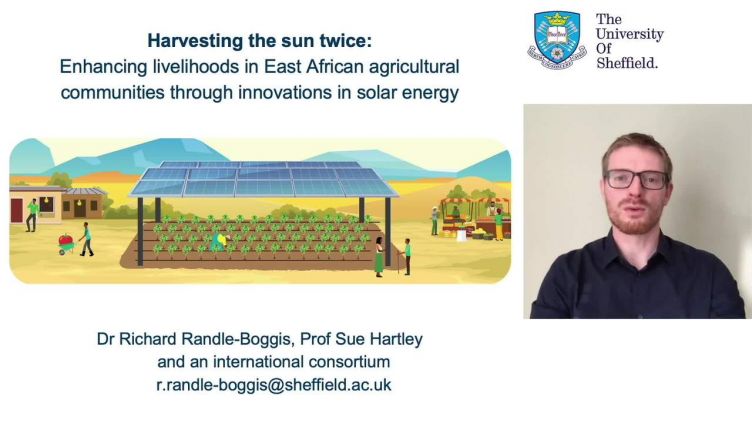Harvesting the sun twice
Solar power is seen as a key way of addressing East Africa’s energy challenges, but the solution is not as simple as installing traditional solar panels across large areas of land.

While ground-mounted arrays of solar panels offer several benefits related to clean energy provision, they miss opportunities to deliver livelihood benefits in addition to electricity supply, and in some cases can actually detract from other development goals. For example, ground-mounted arrays remove land from food production, and at a time when crop yields are threatened by a changing climate, increasing populations and insecure land ownership, we cannot risk putting further pressure on land resources.
Agrivoltaic energy systems, however, can combine the delivery of solar electricity, crop production, and rainwater harvesting on the same land area. Instead of being mounted close to the ground like traditional solar power arrays, agrivoltaic systems are constructed several meters high, with gaps between the arrays, enabling crops to be grown underneath.
Many locations in East Africa have high light intensity, high temperatures and low rainfall. Agrivoltaic energy systems can significantly improve the productivity of crops because the shade provided by the arrays reduces heat stress and water loss.
This more favourable environment for plants means the range of crops can be extended to higher-value ones, which can improve farmer incomes in disadvantaged rural communities. Crops may also be grown in locations previously unsuitable, further increasing food supplies and revenue sources.
Working with African solar developers and a Kenyan agribusiness company, as well as non-governmental organisations, regional political organisations, local communities and workers, researchers have identified project implementation sites in Kenya and Tanzania.
The project seeks to reveal if agrivoltaic technology can lead to improved access to energy and increased incomes through production of higher-value crops as well as identify the barriers within local communities to the uptake of the technology.
The researchers will uncover which economic, social, cultural and political factors help or hinder the expansion of agrivoltaic systems in this region. They will also assess how agrivoltaic technology can best be co-designed with the users and seek input from national and regional policymakers to inform the potential rollout of systems across East Africa and beyond.
This initiative is funded as part of UKRI's Global Challenges Research Fund (GCRF) Collective Programme and is a collaboration with the University of York, World Agroforestry (ICRAF), Stockholm Environment Institute, Teeside University, Centre for Research in Energy and Energy Conservation, and African Centre for Technology Studies.
This project was presented at COP26, watch the short video below.




